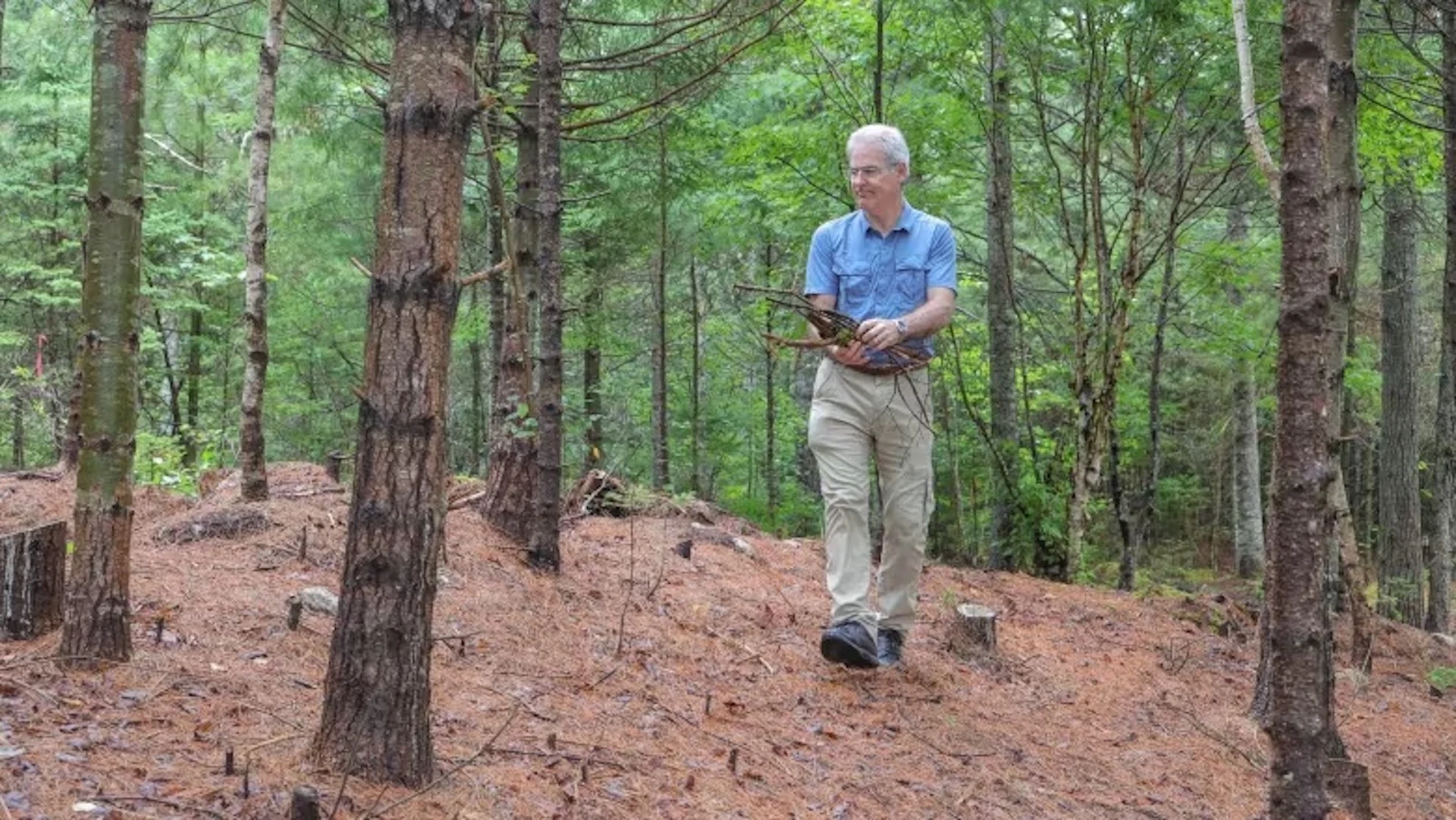
These Halifax-area communities are getting ready for the next wildfire
When Paul Meade moved into his house on a picturesque island overlooking Nova Scotia's St. Margaret's Bay three years ago, he could barely spot its brown wood siding from the road through the property's dense bands of trees.
He started to cut it back, at first for esthetic reasons.
But after a wildfire broke out in the nearby community of Upper Tantallon in May 2023 — destroying 151 homes in its path — Meade soon realized his proactive tree-clearing had another purpose: fire prevention.
CANADA'S WILDFIRES: Visit The Weather Network's wildfire hub to keep up with the latest on the active start to wildfire season across Canada.
At first, he felt some relief that wildfire wasn't on his own doorstep — until another fire was.
"We thought we were OK until a brush fire broke out on the island," said Meade, 70, in the driveway of his home on Sheep's Head Island.
"If it hadn't been for the diversion of an air crew to come over here before the fire trucks got here and scoop water out of the ocean and put the fire out, the whole island could have gone up.
"That was a wake-up call — a serious wake-up call."
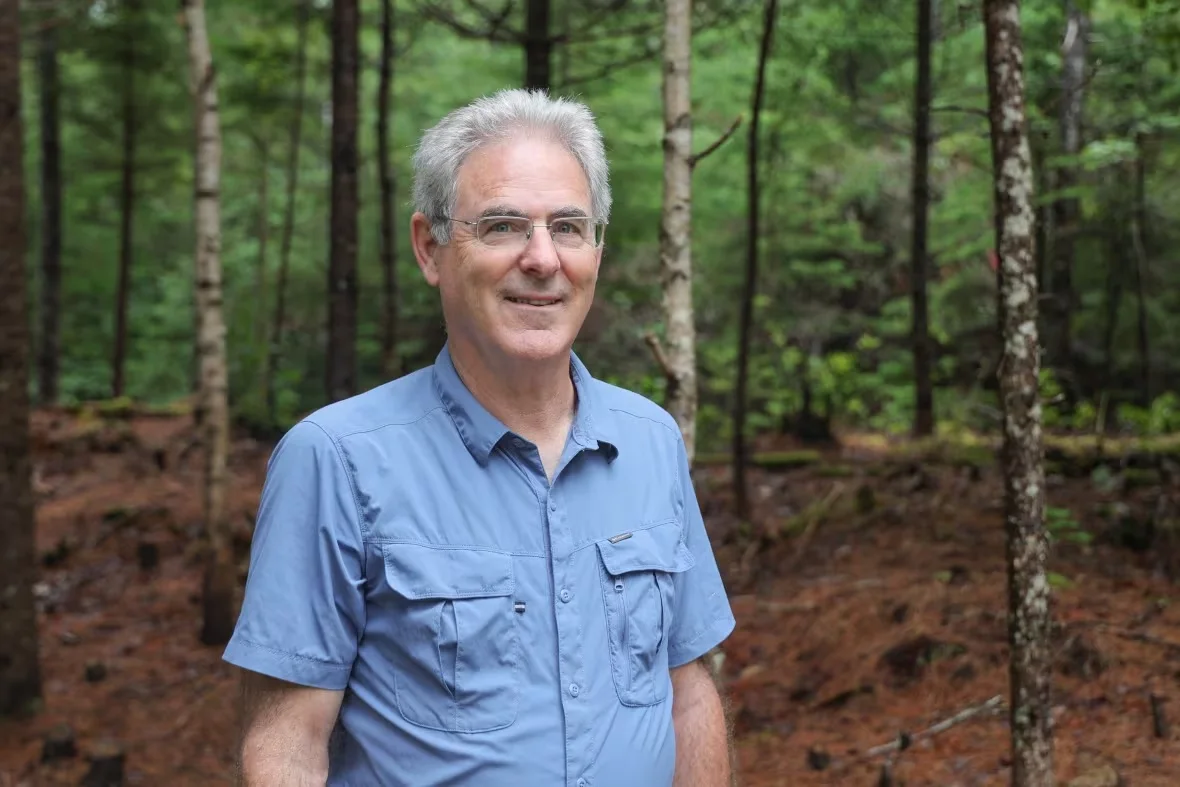
Meade says he's been in touch with other community groups in his area to share knowledge and help in their own efforts to prevent the spread of wildfires. (Robert Short/CBC)
Meade and the 18 other households on the island — referred to by locals as Sheep's Head Island but recognized as The Head on maps — realized they were vulnerable, and wanted to do something about it.
That's when they reached out to Kara McCurdy, Halifax Regional Fire and Emergency's wildfire mitigation manager, for help on what to do next.
McCurdy has vowed to assess every community in Halifax Regional Municipality for its risk of wildfire and other hazards like floods, educating residents on how they can protect their homes and in turn their neighbours, and identifying issues in the wider community that may need addressing.
With more than 200 communities in the region spanning from Hubbards to Ecum Secum, it's an enormous task — one she's carrying out with the help of multiple stakeholders including city planners, environmental officials and an expert at Dalhousie University.
But she's up to the challenge.
"It's hard, because how do you prioritize which community you start with?" said McCurdy.
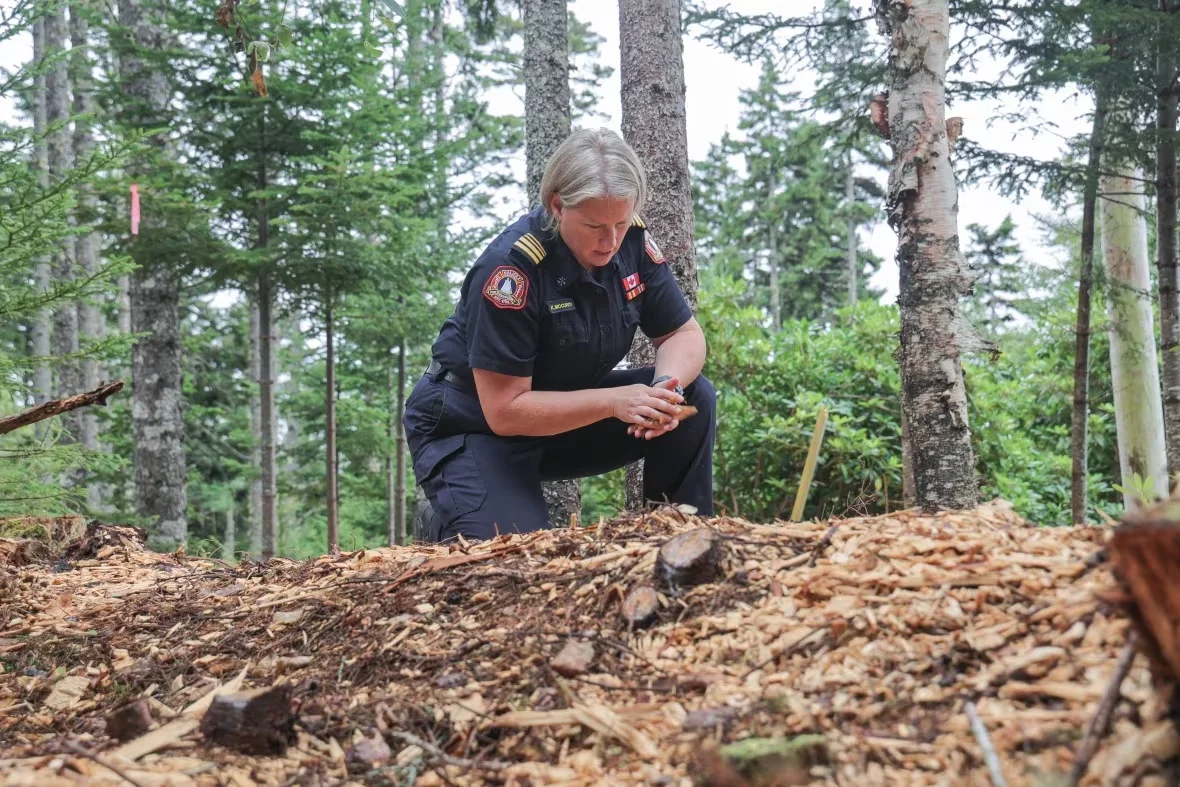
Kara McCurdy is the wildfire mitigation program manager for Halifax Regional Fire and Emergency. (Robert Short/CBC)
"We're looking at creating a map that kind of gives us an idea of which communities have the most fuels within the homes in that community and then prioritizing those communities as where we go to first."
Risk assessments involve a number of different components, but often start with considering the proximity of forests and wooded areas to homes. McCurdy also looks at things like the type of wood in the forest, whether there are emergency egresses and what water sources are available.
As issues are discovered, changes are made. For example, McCurdy could spot trees that need to be cut back from power lines, a need for more hydrants or a lack of emergency exits from a community.
She started this work in her previous role at the provincial Natural Resources Department. There, she completed 18 risk assessments.
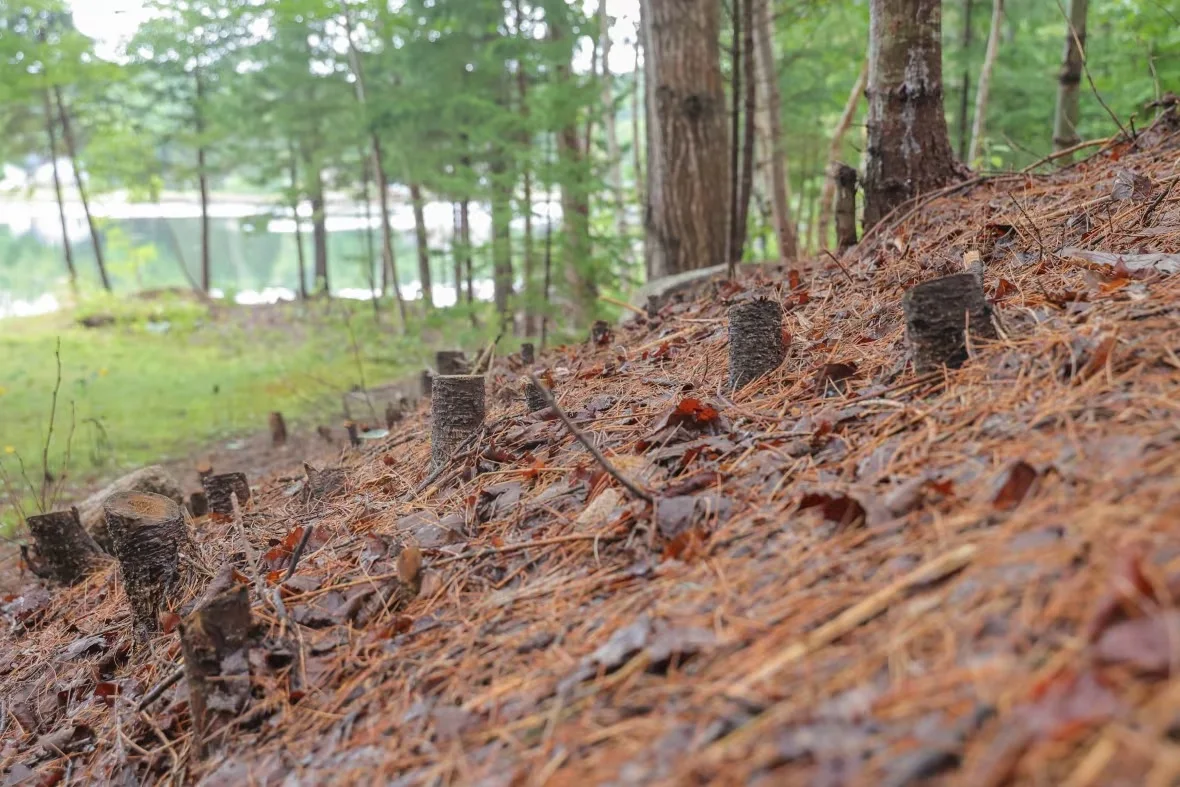
Tree stumps are shown on Meade's property on Sheep's Head Island. Thinning out the forest surrounding your home can help prevent the spread of wildfire, according to the national FireSmart program. (Robert Short/CBC)
McCurdy has finished another six since coming to Halifax Fire last April, meaning a total of 24 have been completed to date. That includes a number of Indigenous and African Nova Scotian communities as part of the fire service's efforts to ensure diverse communities are also prioritized.
It's all part of Halifax Fire's efforts to beef up readiness for the next wildfire at a time when climate change has increased the risk countrywide and given it's not a type of fire the municipal service has traditionally had to deal with.
Halifax Fire is even hiring a new planner who will work directly with McCurdy and have expertise in fire mitigation planning for urban developments. No building will ever be built again without considering how a wildfire could impact it, she said.
"The key thing is getting the buy-in from the community members. Nova Scotia is 75 per cent privately owned and the municipality in general is quite forested in comparison to a lot of others," said McCurdy.
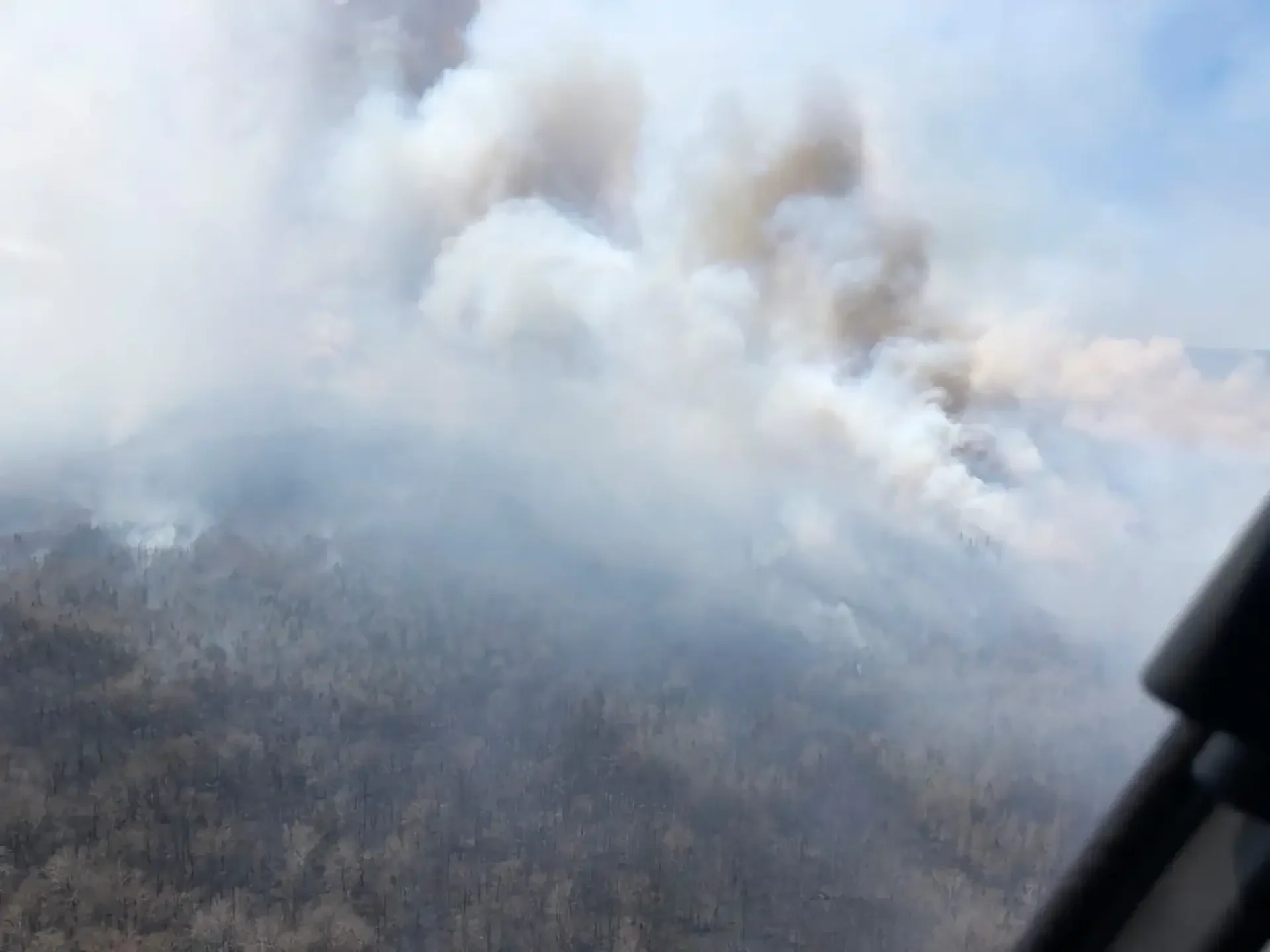
(Department of Natural Resources via CBC)
"So we have that urban interface, those homes right up against the woods to worry about. So getting those folks involved in wildfire mitigation, it's key, and it's not something that's been on people's radar up until last year."
Nova Scotia had its most devastating wildfire season on record last year, with blazes burning through more than 25,000 hectares of land and 200 homes.
When the fire broke out on Sheep's Head Island, resources were stretched thin across the province and Meade realized he and his neighbours had no plan for escape.
Fire trucks had blocked the only way on and off the island: a narrow roadway. They were sitting ducks. Many fled on boats.
Now, the residents have come up with an evacuation plan that includes muster points on the island. They also carried out a community cleanup event to help reduce the amount of fire fuel, which they plan to do yearly.
But one of the most important initiatives, said Meade, is educating residents on how they can mitigate the risk of fire on their own properties.
"Fire and wind is just a bad combination. So what we want to do is thin out the trees. You may not stop a fire, but you can slow it down," Meade, who works in health-care consulting, said in front of a row of small tree stumps.
"If you can slow it down, you might save yourself, right? That's the important thing. You want to save your property, but you want to save your life."
Those teachings are something Cynthia Weatherston has also taken to heart.
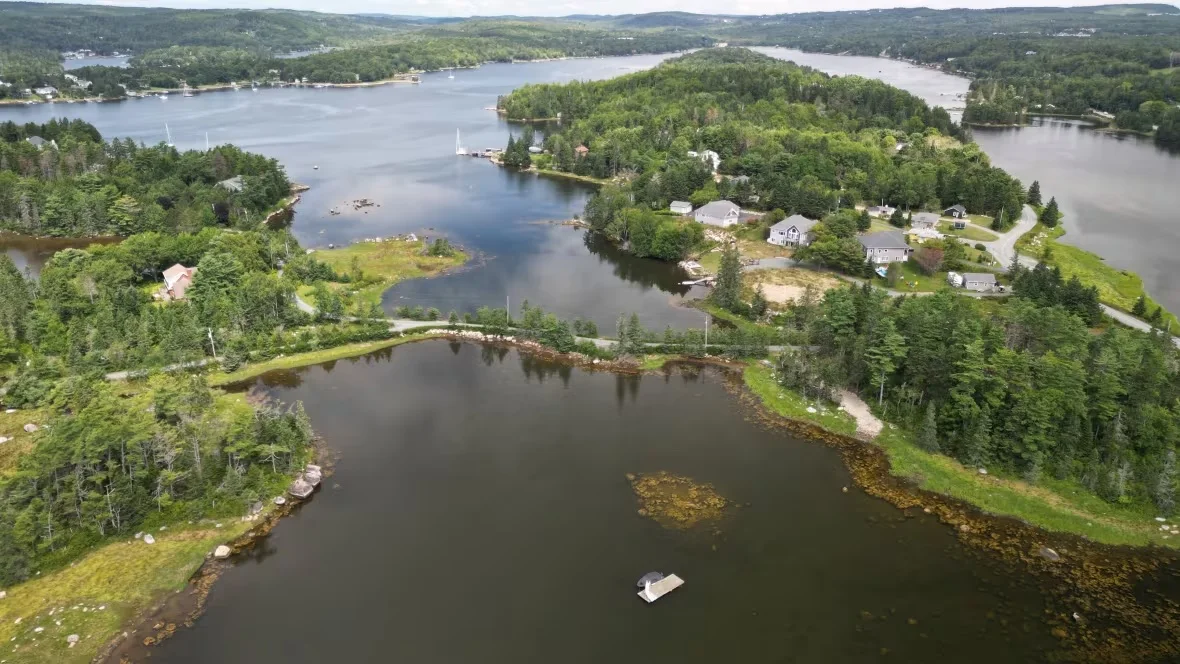
This aerial shot of Sheep's Head Island shows the narrow roadway that connects to the mainland — the only way on and off, and the swaths of wooded areas. (Brian MacKay/CBC)
Armed with a four-inch chainsaw, Weatherston can often be seen slicing through the understory of the woods that surrounds her house overlooking the bay on Masons Point, a peninsula with roughly 190 households situated directly across from Sheep's Head Island.
Like Meade, she felt vulnerable last year with fires burning roughly 13 kilometres down the road in the Upper Tantallon and Hammonds Plains area. There's only one way in and out of her community, too.
She and a handful of other residents met with McCurdy, who told them about FireSmart, a national program that teaches residents and communities about how to protect themselves against wildfires.
Weatherston, 59, took that information back to the Masons Point book club, a group of roughly 25 women that meet monthly.
"They immediately said, 'We have to do this. We have to share this information with our neighbourhood. We need to do it,'" said Weatherston.
From that, a new society was born. Drawing on the various skill sets of the residents, they incorporated as a nonprofit in order to gain access to grants and add a layer of transparency and legitimacy to their efforts.
Weatherston, a retired engineer, said more than 80 people attended the Fire Safe Society of Masons Point's launch meeting in May.
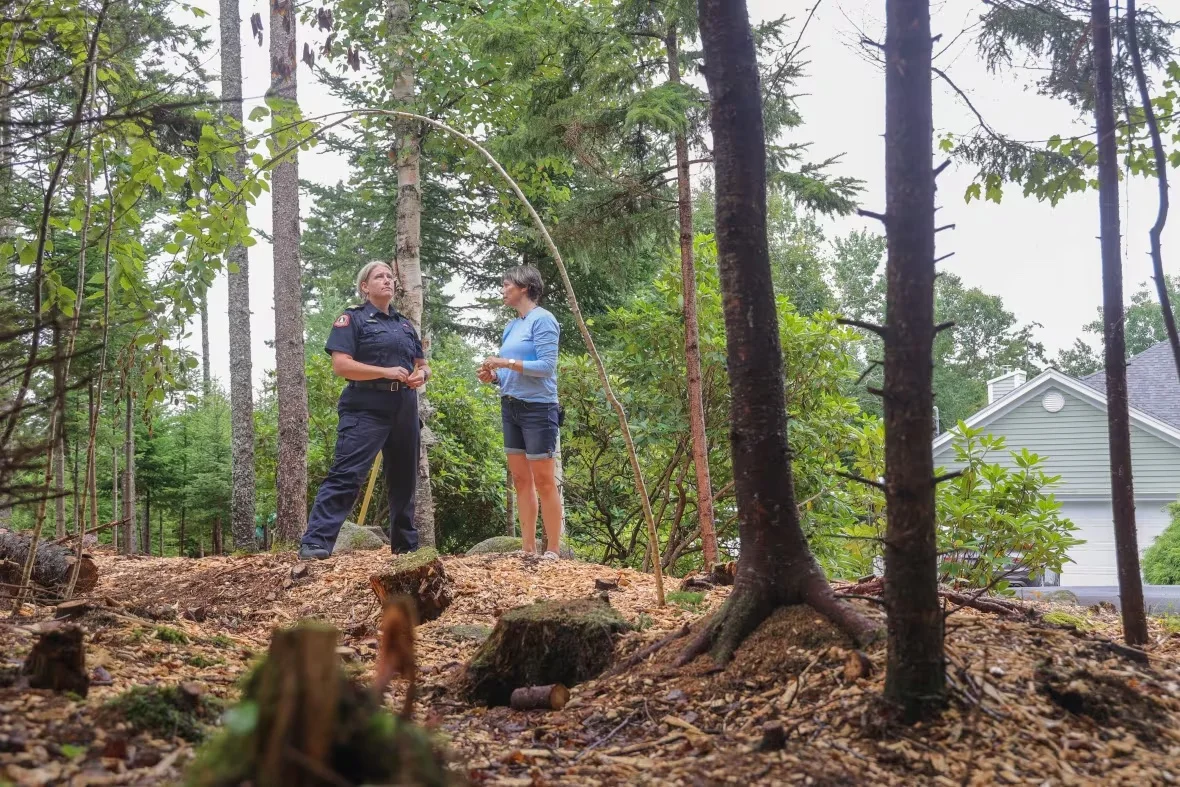
McCurdy (left) and Weatherston discuss the types of wood that exist in the forest and how to decide what trees to keep. For example, the mountain ash is a hardy tree with a lifespan of around 80 years that will grow to be large, so a homeowner may consider keeping that one. (Robert Short/CBC)
Education is key. She has started making weekly videos on social media to relay the information she's learned from McCurdy and the FireSmart program.
"Everything a homeowner does improves things from where they are now, no matter how small," said Weatherston, standing atop wood chips that now blanket the floor of her woods, the remnants of the trees she has already cleared.
"Just start doing something and what you do on your own property helps your neighbour, which in turn will help the whole neighbourhood. So start small, do those things you feel comfortable with and just grow it out from there."
McCurdy said community members play a big part in risk assessments and the ongoing efforts to protect against wildfires.
WATCH: Wildfire a ‘potent’ way of releasing arsenic into the atmosphere, report says
The assessments are living documents that aren't meant to sit on a shelf, she said. She's helping implement changes as she goes, and will revisit the assessments on a regular basis.
McCurdy said although she has started with the communities who appear to be at most risk, she's also been taking on communities that have contacted her directly.
"I'm excited when people reach out to me because they've already got that vested interest in doing the work," she said.
"That's not saying that the ones that haven't reached out aren't interested. I just don't think that they know where to start. The big thing is to get a hold of myself and I can kind of start the process and explain to them how they can go about it."
Thumbnail courtesy of Robert Short/CBC.
The story was originally written by Aly Thomson and published for CBC News.










